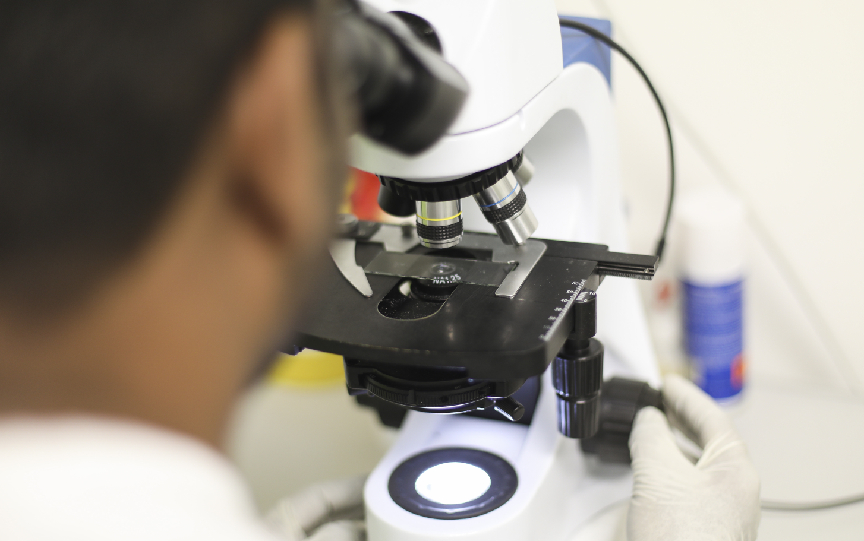An osteopontin-derived peptide inhibits human hair growth at least in part by decreasing FGF7 production in outer root sheath keratinocytes.
Alam M. et al., Br J Dermatol, 2019
Osteopontin, a multifunctional immunomodulatory glycoprotein is expressed in human hair follicles. In this study a peptide fragment of OPN, FOL005 was investigated for impact on hair growth ex vivo using hair follicle and scalp skin organ cultures and in vivo by employing a humanized mouse model. We show that FOl005 binds to the outer root sheath and exerts an inhibitory action on human hair growth by reducing the expression of the hair growth factor, FGF7
Read the full story
Optical coherence tomography for intravital human hair follicle analyses ex vivo.
Lehmann J. et al., Br J Dermatol, 2019
Novel method to study effects of agents on hair growth that avoid labelling and tissue sectioning. We show, for the first time, that optical coherence tomography (OCT) can be successfully used to visualise fine details in human hair follicles ex vivo.
Read the full story
Alopecia areata patients show deficiency of FOXP3+CD39+ T regulatory cells and clonotypic restriction of Treg TCRβ-chain, which highlights the immunopathological aspect of the disease.
Hamed FN. et al., PloS One, 2019
Alopecia Areata is a hair loss disorder involving immune T cell attack on growing hair follicles. In this study, we examined Treg clonotypes in affected patients vs controls and discovered the lack of two ‘protective’ T cell suppressor clonotypes in patients which suggests a novel route to cellular therapy.
Read the full story
CDK4/6 inhibition mitigates stem cell damage in a novel model for taxane‐induced alopecia.
Purba TS. et al., EMBO Mol Med, 2019
Taxanes are drugs used in breast and lung cancer, but cause permanent hair loss, so strategies to protect hair follicles, namely proliferative hair matrix keratinocytes and stem cells are sought. In this study we showed taxane cytotoxicity in human hair follicles ex vivo and demonstrate the potential to use cell cycle G1 arrest as a novel companion drug strategy to reduce taxane-related hair loss.
Read the full story
Deciphering the molecular morphology of the human hair cycle: Wnt signalling during the telogen-anagen transformation.
Hawkshaw NJ. et al., Br J Dermatol, 2019
The role of Wnt signalling in hair induction is well known in murine hair growth and predicted, but as yet poorly studied in human adult hair cycling. In this study, we demonstrate the involvement of Wnt pathway regulatory agonists, antagonists and target genes in the human telogen-to-early-anagen transformation and show important major differences to the murine system.
Read the full story
Apremilast and tofacitinib exert differential effects in the humanized mouse model of alopecia areata.
Laufer Britva R. et al., Br J Dermatol, 2019
The humanised mouse model is an important pre-clinical model for exploring drugs of use in AA. We report here that in marked contrast to tofacitinib, apremilast did not substantially restore the collapsed hair-follicle immune privilege of lesional human AA hair follicles in vivo. This verifies the utility of this model in developing treatment approaches for AA.
Read the full story


